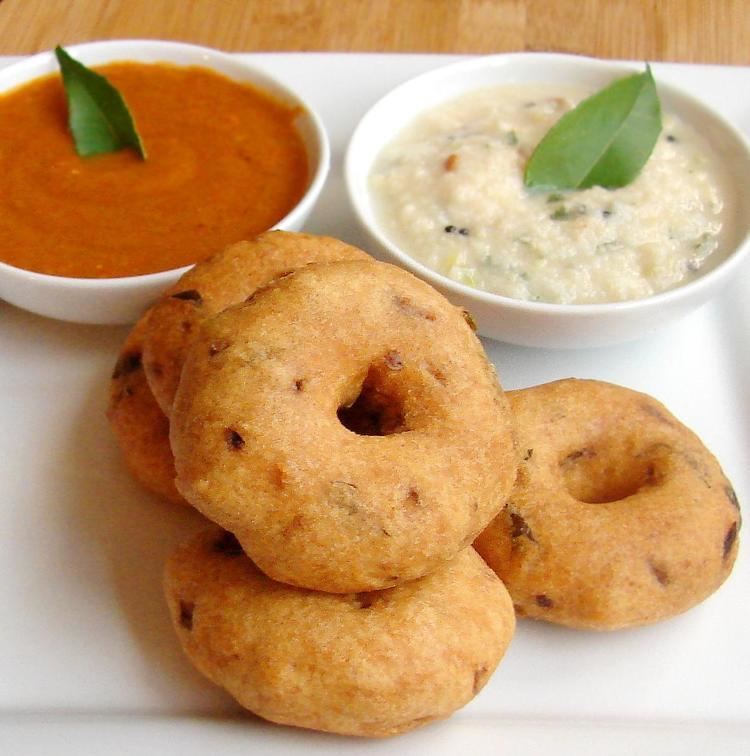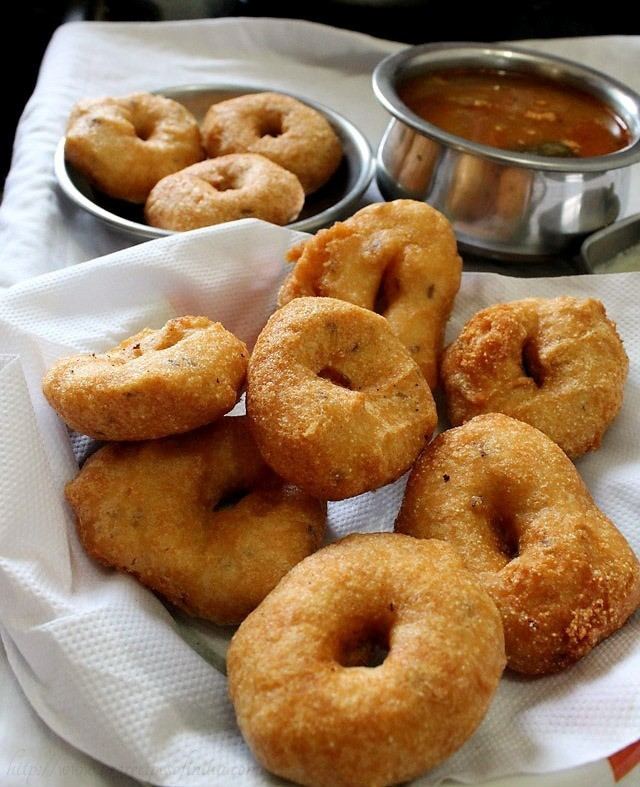Course Breakfast | Type of dish Snack Serving temperature Hot | |
 | ||
Main ingredients Lentils, Chillis, Onions, Curry leaves Energy 190 Calories (per 2 piece) Similar Idli, Dosa, Sambar, Vada pav, Bhaji | ||
Vada [vəɽɑː] is a common term for many different types of savoury fried snacks from India. Different types of vadas can be described variously as fritters, doughnuts, or dumplings. Alternative names for this food include wada, vade, vadai, wadeh and bara.
Contents

The various types of vadas are made from different ingredients, ranging from legumes (such as medu vada of South India) to potatoes (such as batata vada of West India). They are often eaten as breakfast or snack, and also used in other food preparations (such as dahi vada and vada pav).
History
According to K. T. Achaya, Vada was popular among ancient Tamils during 100 BCE-300 CE. A type of vada is mentioned as "vataka" in Manasollasa, a 12th century Sanskrit encyclopedia compiled by Someshvara III, who ruled from present-day Karnataka. In this recipe, green beans are soaked, de-skinned, and ground to a paste. The paste is shaped into balls and deep-fried. Early literature from present-day Bihar and Uttar Pradesh also mentions bara (vada) and mungaura (a vada made from mung).
Preparation
Vadas may be made from legumes, sago or potatoes. Commonly used legumes include pigeon pea (arhar), chickpea (chana), vigna mungo (urad) and mung. Vegetables and other ingredients are added to improve taste and nutritive value.
For legume-based vadas, the legumes (dal) are soaked with water, and then ground to a batter. The batter is then seasoned with other ingredients, such as cumin seeds, onion, curry leaves (sometimes previously sauteed), salt, chillies and/or black pepper grains. Often ginger and baking soda are added to the seasoning in shops to increase the fluffy texture and improve fermentation for large batches. The mixture is then shaped and deep-fried, resulting in vadas with a crispy skin and fluffy centre. The preparation of kalmi vadas involves cutting the resulting product and re-frying it.
Serving
Vadas are often eaten as snacks or as an accompaniment to another dish. In restaurants, they can be ordered as an à la carte item, but are not the main course. They are preferably eaten freshly fried, while still hot and crunchy. They are served with a variety of dips including sambar, watery or dry chutneys and yogurt (often called "curd" in Indian English).
Medu vadas are typically served along with a main course such as dosa, idli, or pongal. Sambar and coconut chutneys are the standard accompaniments for medu vadas.
Varieties
The various types of vadas include:
